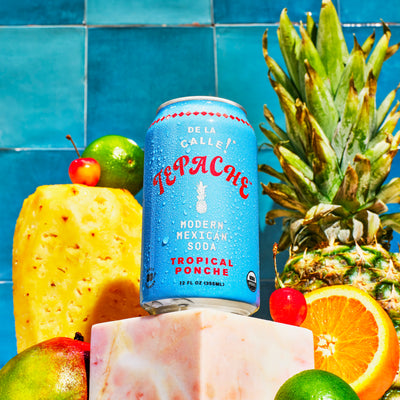Mexican Seasoning: How It’s Meant To Be Used

If you’ve ever had Mexican food, you know that it is often spicy and full of flavor. Several spices give Mexican cuisine its distinct flavor. This article will tell you everything you need to know about Mexican seasoning, one of the keys to making delicious Mexican food at home.
What Is Mexican Seasoning?
Mexican seasoning is a blend of traditional Mexican spices that is used in popular Mexican dishes. You know you’ve made a good Mexican seasoning when it is the only spice you need in your recipe.
Mexican seasoning is known for its versatility and can be beneficial in non-Mexican recipes. Keep reading to find out a few of the ways you can incorporate Mexican seasoning into some of your favorite meals.
What’s the Difference Between Mexican Seasoning and Taco Seasoning?
Before diving into how Mexican seasoning is made, it’s important to note the differences between Mexican seasoning and taco seasoning because they are not the same.
Ultimately, the difference between these two comes down to the composition of spices. Taco seasoning is usually milder than Mexican seasoning. Mexican seasoning contains ancho powder and chipotle chile pepper, both of which give it a little more of a kick.
How Can I Make Mexican Seasoning at Home?
Although it might seem impossible to capture the complexity of Mexican cuisine at home, it is actually quite easy to make Mexican seasoning if you have the right ingredients.
To make Mexican seasoning at home, you’ll need:
- ½ cup chili powder
- ¼ cup ancho powder
- 1 tablespoon cumin
- 2 teaspoons dried oregano
- 1 ½ teaspoons garlic powder
- 1 teaspoon onion powder
- 1 teaspoon dried chipotle chile pepper
- 1 teaspoon salt
- 1 teaspoon coriander
The most important part of this recipe is the proportion of the seasonings. Given that it uses strong spices like ancho powder and cumin, putting too much or too little in can throw off the recipe. That said, make sure to use exact measurements when making Mexican seasoning to get the right balance of flavors.
For a smokier flavor, you can add more ancho powder. If you don’t have ancho powder, you can use sweet or smokey paprika as a substitute. Make sure to mix your spices for at least a minute before storing or using your Mexican seasoning.
What Is the Best Type of Chili Powder for Mexican Seasoning?
There are several different types of chiles you can use in your Mexican seasoning. Each chile will add a slightly different flavor to your seasoning, so choosing the right chile for your taste is important. The following are a few chiles that you can use:
- Pasilla powder: This type of chili powder has a deep red color. Although it can be pungent, it has a tangy, mild flavor.
- Mulato: This powder is similar to ancho powder in that it is made from dried poblanos chilis. It is also a good substitute for ancho powder if you can’t find it in the store.
- Guajillo powder: This type of chili powder is fairly hot. It has a bright red color and a smokey taste which will definitely come through in your seasoning.
How Do I Use Mexican Seasoning?
Now that you know how to make Mexican seasoning at home, you might be wondering, how can I use it in my cooking? This section will take a close look at some recipes that will benefit from Mexican seasoning and give you a real taste of Mexico at home.
Tacos
Perhaps the most obvious way to use Mexican seasoning is to season the ground beef for tacos. As previously mentioned, Mexican seasoning is different from taco seasoning. That said, it is a great option if you want spicier tacos. You can also use Mexican seasoning to spice up tofu for vegan tacos.
Meat & Veggies
One great way to use Mexican seasoning is to sprinkle it on top of your meat to give it flavor. To make a meat rub with Mexican seasoning, simply mix it with oil and use it as a marinade on the meat before cooking it.
You can also use it as a marinade for roasted veggies or a topping for a baked potato or sweet potato. Make sure to add the seasoning to the veggies after they come out of the oven so that you don’t scorch them.
Another way to use Mexican seasoning to flavor your meat and veggies is to melt them with butter. Add a couple of tablespoons of Mexican seasoning to a softened stick of butter and use the butter as you normally would to cook chicken, steak, and vegetables.
Dips, Dressings, and Sauces
If you’re looking to spice up your guacamole, add a little bit of Mexican seasoning to mashed avocado. From there, add a squirt of lime juice and salt to taste. This is a great option if you’re looking for a quick way to whip up a batch of guacamole!
You can also add Mexican seasoning to other dips such as hummus and chip dip to give them a little kick. If you’re stuck with a bland salad dressing, you can also add some heat to it with Mexican seasoning.
If you want the Mexican seasoning to be the primary ingredient, you can add a few tablespoons to sour cream or yogurt to make a delicious sauce or topping for roasted veggies or meat.
Stews and Soups
Although it might not seem like the case, Mexican seasoning can also add the perfect touch to many soups and stews. For example, you can add a pinch of your seasoning to creamy soups like tomato bisque to give them some heat. Mexican seasoning can also spice up a stew or anything you make in the slow cooker.
How Much Mexican Seasoning Should I Put in My Dishes?
If the recipe you’re using does not specify how much Mexican seasoning to use, a good rule of thumb is to use 1 to 2 tablespoons in a dish.
If you’re worried about the seasoning overpowering the other ingredients, you can start with half a tablespoon and increase the amount of seasoning from there.
How Should I Store My Mexican Seasoning?
Storing seasons can be tricky. The best way to store your Mexican seasoning is to store it in a sealed glass container or a small plastic food container.
It’s important to store the seasoning in a dry, dark place. If you store your Mexican seasoning near a heat source, it will harden, and the color and flavor will change.
Conclusion
Mexican seasoning is a versatile blend of spices that can help you replicate the amazing flavor of Mexican cuisine at home.
Not to be confused with taco seasoning, Mexican seasoning is a slightly spicer blend that’s the foundation for several of your favorite Mexican dishes. That said, it can also add flavor to non-Mexican dishes like beef stew or hummus.
What’s the best part about this magical mix of spices? It’s not hard to make at home! When making Mexican seasoning at home, the most important part of the process is getting the proportions of spices correct. Once you get the proportions right, you’re ready to start whipping up tasty, flavorful dishes at home!
Sources:
Antibacterial and Antifungal Activities of Spices | NCBI
Conjugated linoleic acid in meat and meat products: A review | NIH











